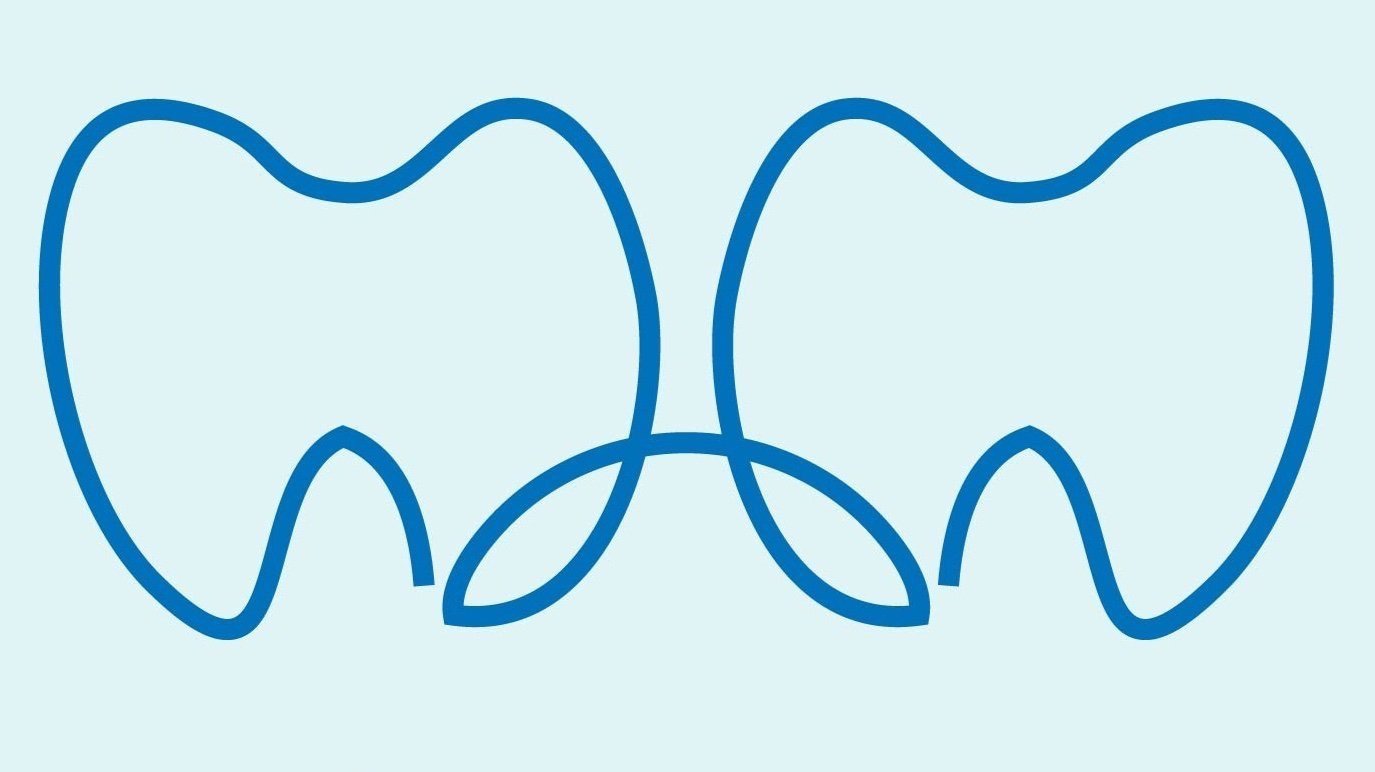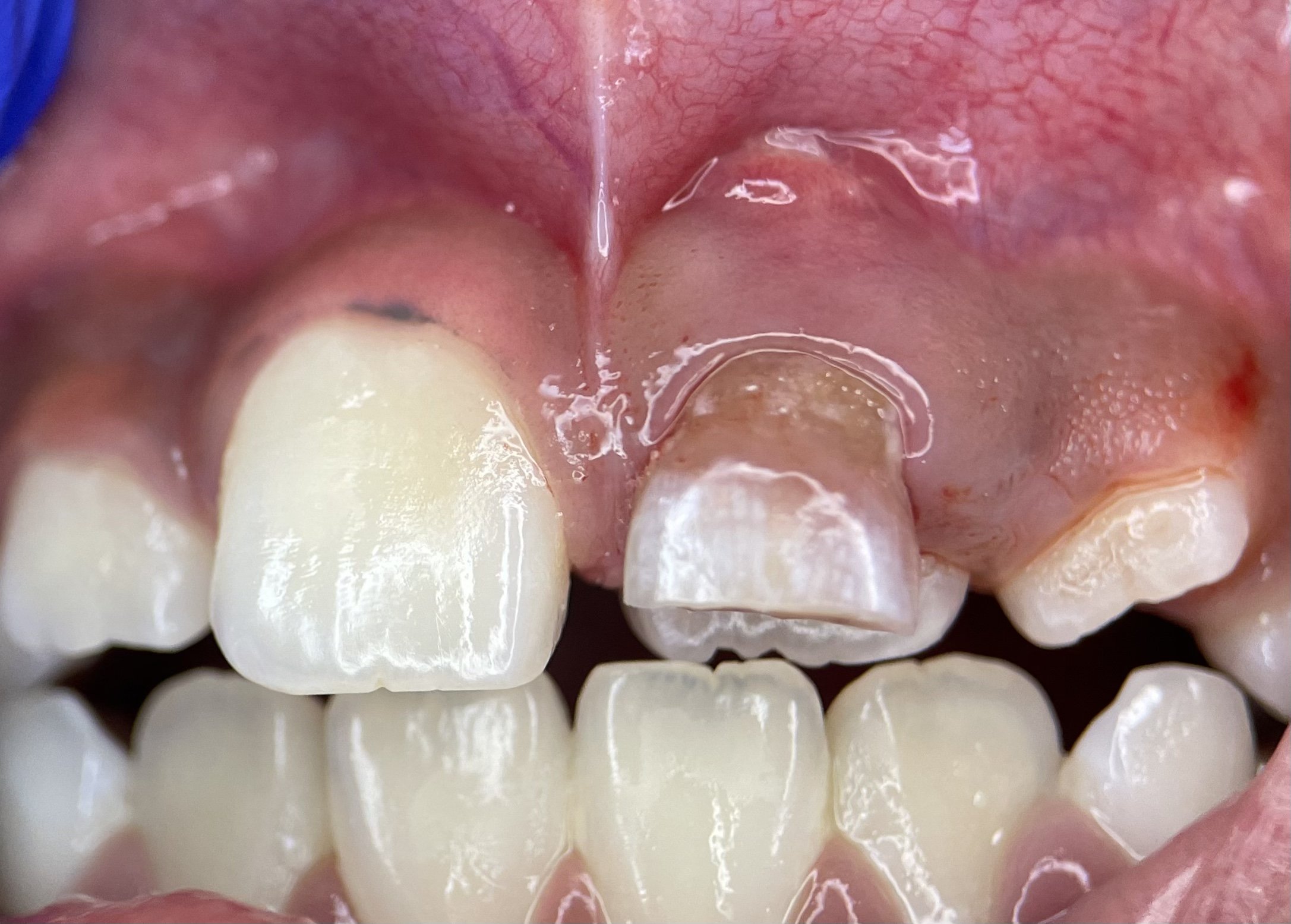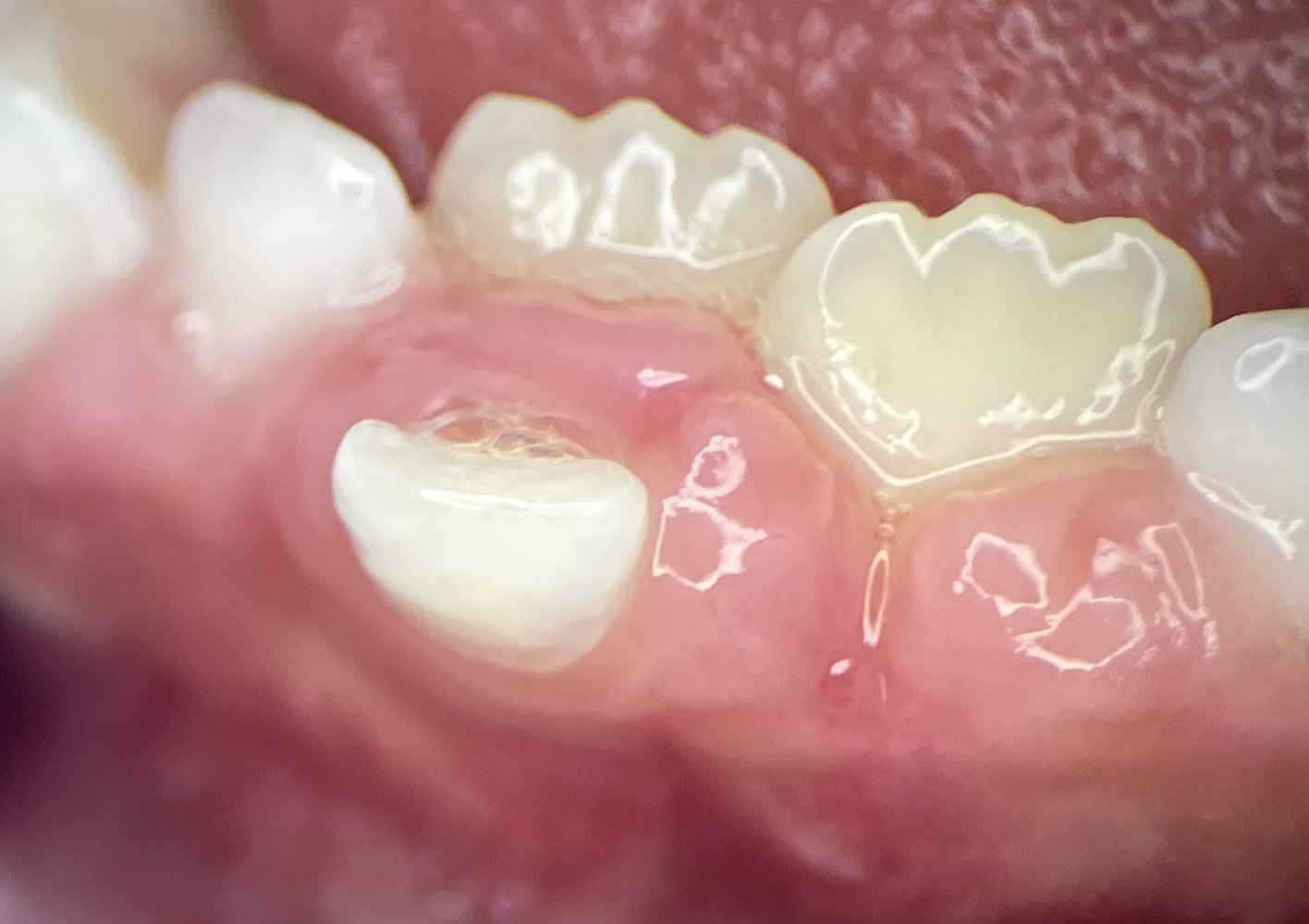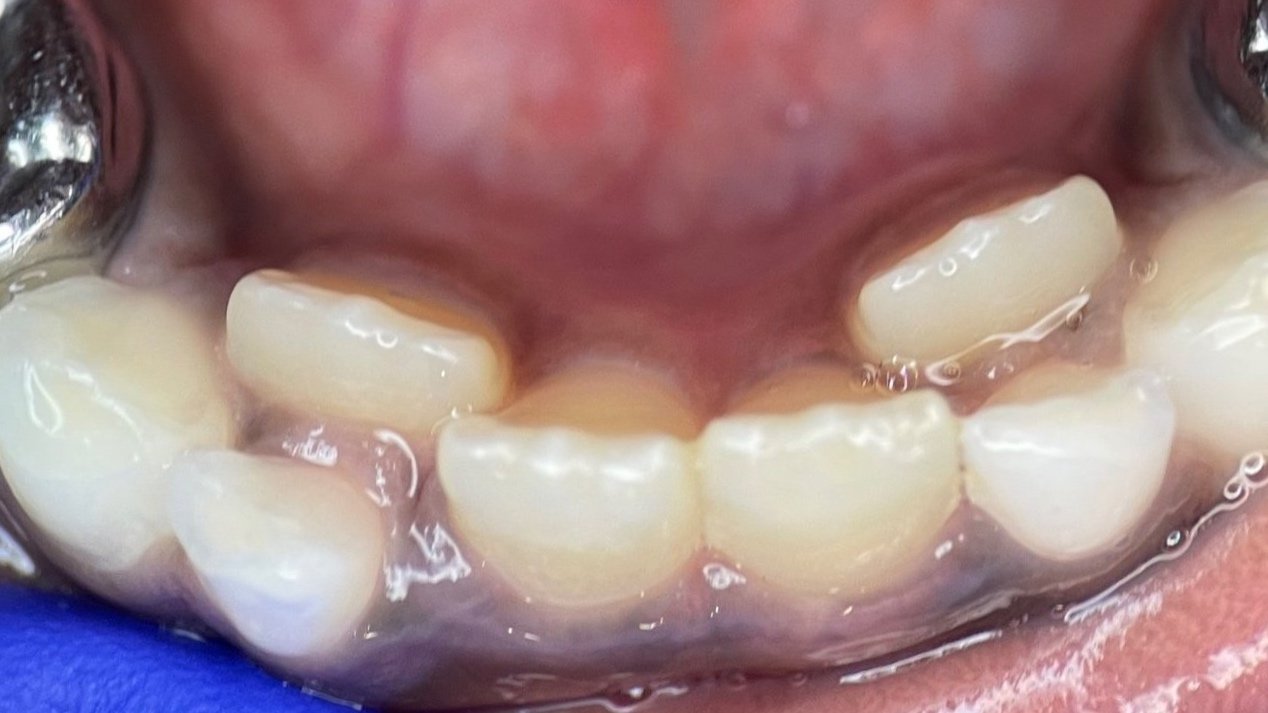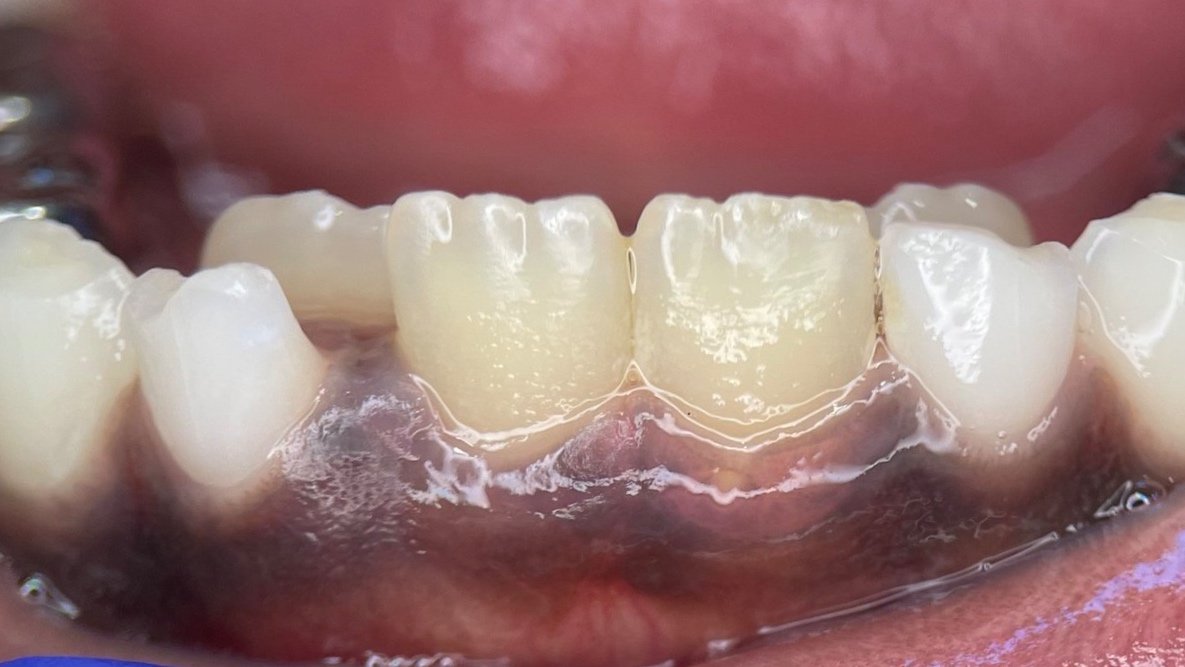Double row of incisors
The first teeth your child usually loses are the lower front teeth.
As they begin to fall out, sometime’s you’ll see the permanent tooth start to grow in behind the baby tooth - i.e. “Shark Teeth".”
This double row of teeth is very common and usually not a concern. As the permanent incisor continues to grow in, the tongue will push the permanent tooth forward and usually push out the baby tooth.
If you see this in your child, look for two things:
Is the baby tooth loose?
Is the top of permanent tooth at the same height as the baby tooth?
If the baby tooth is loose and the permanent tooth is not at the same height as the baby tooth (i.e. still growing in), we usually wait to see if the baby tooth falls out on its own.
This baby tooth is very loose. At home exfoliation is encouraged, but extraction can be indicated if the tooth does not fall out naturally.
However, if the baby tooth is not loose and the permanent tooth is about the same height, we usually recommend removing the baby tooth to help with the positioning of the permanent tooth and avoid any gum defects.
In this case, the primary teeth are not loose.
And the permanent teeth are at the same height of the baby teeth. Your dentist may recommend extraction in this case.
What if this happens to the upper front teeth?
If your child has a double row of teeth in the upper arch, the upper permanent teeth may grow in behind the lower teeth. This is called a “cross bite.” When this occurs, it is difficult for the teeth to naturally correct into the proper position and braces may be needed.
When you see this, contact your pediatric dentist to see if extracting the teeth is the best option.
The permanent tooth on the patient’s left is growing behind the baby tooth. Removal of these teeth may be indicated to prevent the development of a cross bite.
The permanent tooth is growing in front of the baby tooth. At home exfoliation is usually encouraged, but extraction may be indicated.
If this is happening with your child, schedule a visit with your local pediatric dentist.

